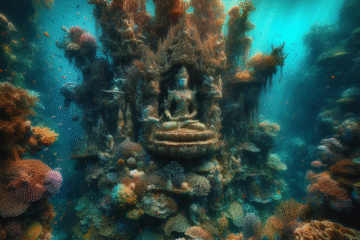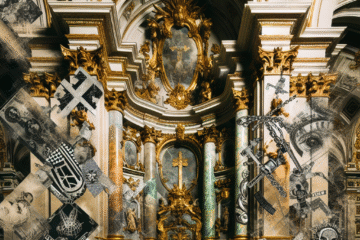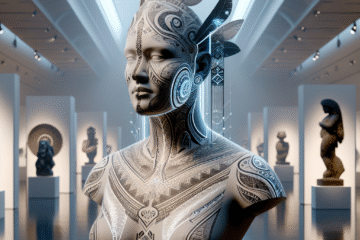Introduction:
Digital painting has come a long way since its inception, and the advancements in technology have opened up new and exciting possibilities for artists. Experimental digital painting techniques take these advancements a step further, pushing the boundaries of traditional painting and providing new opportunities for creative expression. By utilizing innovative tools and software, artists can create entirely new forms of art that would have been impossible just a few years ago.
Thesis statement: This article explores the world of experimental digital painting techniques, including their characteristics, examples, tools and software, tips and tricks, and challenges and limitations.
Experimental digital painting techniques are a relatively new area of art that have been made possible by the rise of digital technologies. These techniques are characterized by their ability to break out of traditional painting forms and provide artists with a new avenue for creative expression. They can include glitch art, generative art, augmented reality art, and other types of digital art that explore the limits of technology and art.
One of the most exciting aspects of experimental digital painting techniques is their ability to utilize a wide range of tools and software. Digital tablets, 3D modeling software, and programming languages are just a few of the many options available to artists who want to explore this field. These tools can be combined to create stunning works of art that were once impossible to achieve with traditional painting methods.
However, getting started with experimental digital painting can be a challenge, especially for artists who are new to the field. There are many technical skills to learn, and artists may need to seek out training or mentorship to develop these skills. Additionally, balancing digital techniques with traditional art methods can be a challenge for some artists.
Despite these challenges, experimental digital painting techniques offer a new world of possibilities for artists who want to break out of traditional modes of expression. By exploring these techniques, artists can create entirely new forms of art that challenge our perceptions of what is possible with technology and art.
II. Exploring Experimental Digital Painting Techniques
Digital painting techniques are evolving rapidly, and with each new technological advance comes the opportunity for experimentation and pushing boundaries. Experimental digital painting techniques refer to the use of digital technology to create art in innovative ways that break from traditional painting forms. These techniques often involve manipulating digital tools and software to create works of art that are interactive, generative, or involve other unique features.
Characteristics of Experimental Digital Painting Techniques
Experimental digital painting techniques have some defining characteristics that set them apart from traditional painting methods. One of the key characteristics is the use of technology to create art. This often involves the use of digital tools and software, which allows artists to create works that are dynamic, interactive, or generative.
Another defining characteristic is that experimental digital painting techniques often involve a departure from traditional painting forms. For example, glitch art involves intentionally creating errors in digital images, while generative art involves using algorithms to create complex and ever-changing images. Augmented reality art, on the other hand, involves superimposing digital elements onto the real world.
Examples of Experimental Digital Painting Techniques
There are many different types of experimental digital painting techniques, each with its own unique approach and set of tools. Here are three examples:
- Glitch art – Glitch art involves intentionally creating errors in digital images. These errors can be caused by corrupting the image file, manipulating the image code, or using software that intentionally creates glitches. The result is often an image that is distorted or fragmented in some way, creating a sense of disorientation or surrealism.
- Generative art – Generative art involves using algorithms to create images that are ever-changing and never the same. These algorithms can be programmed by the artist or generated through artificial intelligence. The result is often a complex, abstract image that is unique to each viewing.
- Augmented reality art – Augmented reality art involves superimposing digital elements onto the real world. This is often done using a smartphone or tablet app that recognizes a physical object and overlays digital content on top of it. The result is an interactive and immersive experience that combines the physical and digital worlds.
Conclusion
Experimental digital painting techniques represent a new frontier in art, offering artists the ability to create works that are interactive, dynamic, and ever-changing. By using digital tools and software, artists can push the boundaries of traditional painting and create works that challenge our perceptions of what is possible with art and technology. From glitch art to augmented reality, there are many different approaches to exploring this field, and the possibilities are limited only by the artist’s imagination.
III. Tools and Software for Experimental Digital Painting
Experimental digital painting techniques involve the use of technology to create works of art that break from traditional painting forms. To create these works of art, artists need access to a range of tools and software that can help them achieve their creative vision. In this section, we will explore some of the most commonly used tools and software for experimental digital painting, as well as some of the best options for different types of techniques.
Types of Tools and Software for Experimental Digital Painting
- Digital Tablets – Digital tablets are a popular tool for digital artists, allowing them to create digital artwork using a stylus or pen. These tablets are often pressure-sensitive, which allows artists to create detailed and precise strokes. They also often come with customizable buttons and controls, which can be used to speed up workflow and improve productivity.
- 3D Modeling Software – 3D modeling software is another popular tool for experimental digital painting techniques. This type of software allows artists to create 3D models that can be used in animations or virtual reality experiences. The software is often complex and requires a high level of technical skill to use effectively.
- Programming Languages – Some experimental digital painting techniques require the use of programming languages to create custom software that can generate or manipulate images. These programming languages can include JavaScript, Python, and Processing, among others.
Best Tools and Software Options for Experimental Digital Painting Techniques
- Glitch Art – For glitch art, artists can use software like Audacity or Glitch to create intentional errors in digital images. Photoshop can also be used to manipulate images and create glitches.
- Generative Art – Processing is a popular programming language used for generative art, allowing artists to create algorithms that generate images. Other software options for generative art include Grasshopper and Houdini.
- Augmented Reality Art – To create augmented reality art, artists can use software like Unity or Vuforia to overlay digital elements onto the real world. Some augmented reality apps, like SketchAR or PaintAR, provide a more user-friendly way to create augmented reality art.
- Interactive Digital Painting – Interactive digital painting often involves using software like TouchDesigner or Max/MSP to create interactive experiences for users. These programs allow artists to program complex interactions between the user and the artwork.
Conclusion
Experimental digital painting techniques rely heavily on the use of technology and software to create unique works of art that challenge traditional painting forms. By using digital tablets, 3D modeling software, programming languages, and other tools, artists can push the boundaries of what is possible with art and technology. It is important for artists to explore different tools and software options to find the best fit for their specific artistic vision. With the right tools and software, artists can create works of art that are interactive, generative, and immersive, opening up new possibilities for the world of digital painting.
IV. Tips and Tricks for Getting Started with Experimental Digital Painting
Getting started with experimental digital painting can be a daunting task, especially for artists who are new to the field. There are many technical skills to learn, and artists may need to seek out training or mentorship to develop these skills. Here are some tips and tricks for artists who are looking to explore this exciting and dynamic field.
- Start with a small project – When first starting out with experimental digital painting, it can be helpful to start with a small project. This can help you get a feel for the tools and software that you are using, and can help you build confidence as you experiment with different techniques.
- Experiment with different tools and techniques – There are many different tools and techniques that can be used in experimental digital painting, and it is important to explore a variety of options to find the ones that work best for your artistic vision. This can involve trying out different software, experimenting with different hardware, and exploring different types of digital painting techniques.
- Seek out online resources and communities – There are many online resources and communities available for artists who are interested in experimental digital painting. These resources can include tutorials, forums, and social media groups, among others. By engaging with these resources, artists can learn new skills, connect with other artists, and get feedback on their work.
- Combine digital and traditional painting techniques – While experimental digital painting is all about pushing the boundaries of traditional painting forms, there is still a lot to be gained from combining digital and traditional techniques. For example, artists can scan in sketches or hand-drawn elements to incorporate into their digital paintings, or use a digital tablet to add finishing touches to a traditionally painted piece.
Examples of Artists Who Have Successfully Used Experimental Digital Painting Techniques
- Rafael Lozano-Hemmer – Rafael Lozano-Hemmer is a Mexican-Canadian artist who has gained international recognition for his interactive and immersive installations that utilize digital technology. His works often involve projections, sound, and sensors, and encourage the viewer to become a participant in the artwork.
- Sougwen Chung – Sougwen Chung is a Brooklyn-based artist who uses a combination of traditional painting techniques and digital technology to create stunning works of art. Her works often involve generative algorithms, motion-capture technology, and projection mapping.
- Joshua Davis – Joshua Davis is an American digital artist who is known for his intricate and colorful designs that are created using a combination of code and hand-drawn elements. His works have been featured in museums and galleries around the world.
Conclusion
Experimental digital painting is an exciting and dynamic field that offers new possibilities for creative expression. By starting with small projects, experimenting with different tools and techniques, seeking out online resources and communities, and combining digital and traditional techniques, artists can develop the skills and confidence they need to explore this field. With the right approach, artists can create stunning works of art that push the boundaries of what is possible with technology and art.
V. Challenges and Limitations of Experimental Digital Painting
While experimental digital painting techniques offer a range of exciting and innovative possibilities for artists, there are also a number of challenges and limitations associated with this field. Here are some of the main challenges and limitations that artists may encounter, as well as some strategies for overcoming them.
Challenges and Limitations
- Learning Curve – One of the biggest challenges associated with experimental digital painting is the learning curve associated with new software and tools. Artists need to invest time and effort into learning how to use these tools effectively, which can be time-consuming and challenging.
- Technical Skills – Many experimental digital painting techniques require a high level of technical skill in programming and digital design. Artists who do not have these skills may struggle to create works that are technically complex.
- Over-reliance on Technology – There is also a risk of becoming too reliant on technology when creating digital paintings. Artists may become so focused on the technical aspects of creating the artwork that they forget to focus on the artistic aspects, leading to works that are technically impressive but lack emotional depth.
Strategies for Overcoming Challenges and Limitations
- Seek out Training or Mentorship – One of the best ways to overcome the learning curve associated with new software and tools is to seek out training or mentorship. There are many online resources, courses, and mentorship programs available that can help artists develop the skills they need to succeed in this field.
- Collaborate with Other Artists – Collaboration is another way to overcome challenges and limitations in experimental digital painting. By working with other artists who have complementary skills and expertise, artists can create works that are more complex and impactful.
- Balance Digital and Traditional Art Techniques – Finally, it is important for artists to balance digital and traditional art techniques in their work. By incorporating traditional techniques into their digital paintings, artists can create works that have a unique and distinctive look, while also maintaining a connection to the art of the past.
Conclusion
Experimental digital painting is an exciting and innovative field that offers many possibilities for artists. However, it also presents a number of challenges and limitations that must be acknowledged and addressed. By seeking out training or mentorship, collaborating with other artists, and balancing digital and traditional art techniques, artists can develop the skills and expertise they need to succeed in this dynamic and constantly evolving field.
VI. Conclusion
In this article, we have explored the exciting world of experimental digital painting techniques. We have discussed the defining characteristics of these techniques, the types of tools and software that are commonly used, and the challenges and limitations that artists may encounter when exploring this field.
Despite these challenges, experimental digital painting techniques offer new possibilities for artists who want to break out of traditional modes of expression. By using digital tools and software, artists can create works that are interactive, dynamic, and ever-changing. They can push the boundaries of what is possible with art and technology, and create works that challenge our perceptions of the world around us.
To be successful in this field, artists need to invest time and effort into learning new skills and techniques, as well as seek out training or mentorship to develop these skills. They must be willing to experiment with different tools and techniques, collaborate with other artists, and balance digital and traditional art techniques.
Looking to the future, experimental digital painting techniques hold enormous potential for pushing the boundaries of art and technology. As technology continues to evolve, new possibilities for creative expression will emerge, and artists will be at the forefront of exploring these possibilities.
In conclusion, experimental digital painting techniques represent an exciting and dynamic field that offers new possibilities for artists who want to push the boundaries of traditional painting forms. By embracing this field, artists can create works that are interactive, generative, and immersive, opening up new possibilities for the world of digital painting. The future of experimental digital painting is bright, and we can expect to see many exciting new developments in the years to come.


